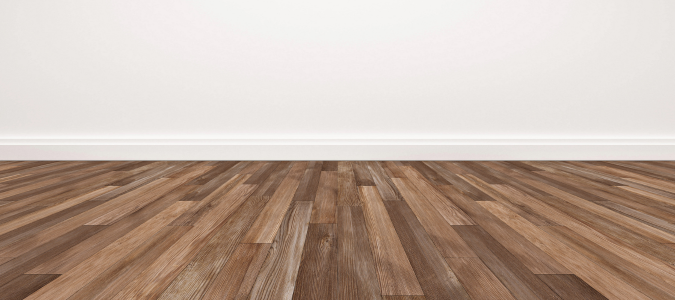As their name implies, bed bugs love your bed. They hide in your mattress seams, bed sheets and headboard. While they usually stay near the bed, you can still find bed bugs in your furniture. These pests are no thicker than a credit card and can squeeze themselves through tiny cracks and openings.
If you suspect you have bed bugs at home, here are some signs to look out for and measures to control them. However, the best solution is to call in pest control specialists. These pros have the tools and expertise to control the bed bug population in your home so you can get your beauty rest again.
Signs You Have Bed Bugs in Your Furniture and What You Should Do
Bed bugs are small, flat and wingless insects that are around a quarter of an inch long. Bed bugs are about the size of an apple seed but will swell up after gorging themselves on blood. They are mahogany or rusty brown but turn reddish-brown after feeding. Although they can’t jump or fly, they are excellent crawlers and can move around quickly.
A bed bug infestation has nothing to do with the cleanliness of your home, as they’re not attracted to dirt or decaying matter. They live where humans live because we are their source of nutrition. So, how do these pesky insects get inside our homes? They are stowaways that hide in various objects like luggage and secondhand furniture. We introduce them to our space when we bring new objects from infested places. They also know how to travel from one space to another in multi-unit buildings like hotels and apartment complexes.
The most obvious sign of a bed bug infestation is bite marks on areas of the skin that are typically not covered by clothing, including arms, hands or legs. However, bite marks can take a while to appear, sometimes as long as two weeks. Additionally, some people don’t react to bed bug bites at all! That’s why homeowners need to look for more clues. Here are some other signs you have bed bugs in your furniture, bed and other areas in your home:
- A sweet, musty odor wafting around your home
- Bed bugs’ exoskeletons lying around after they molted
- Rust-colored spots on the mattress, bed sheets and pillowcases from bed bugs’ fecal matter
- Live bed bugs hiding in your bed, upholstered furniture, curtains and nooks and crannies in your home
No one wants these annoying bloodsuckers invading their home. If you’re dealing with an infestation, here are some steps you can take to control their population.
Eliminate Hiding Areas
The first step is eliminating clutter around the home, especially in your bedroom. A cluttered space gives bed bugs dark and cozy hiding places, making it harder for you to locate them. Next, seal off cracks, crevices and small hiding spots with silicone caulk. That way, the bed bugs cannot easily travel from room to room.
If your bed is crawling with bed bugs, it can help to buy a bed bug encasement for your mattress and box springs. That makes it harder for the bed bugs to get in and out. Buy a durable encasement and leave it on for a whole year. Replace them after each use, seal the plastic tightly and dispose of it carefully outside.
Vacuum Thoroughly Around Your Home
Vacuuming is an effective way to reduce the bed bug population in your home. Vacuum the floor, rugs, upholstered furniture and all nooks and crannies. Don’t forget the bed frame, mattress and under and around the bed.
Use Heat
Bed bugs die in high heat, so you can use heat treatments to help control the infestation in your home. Set your clothes dryer’s heat level to high to remove bed bugs from your bed sheets and pillowcases. You can also use a steam cleaner on fabrics, upholstered furniture and crevices, ensuring the temperature is at least 120 degrees Fahrenheit.
Discard Infested Items Carefully
If bed bugs have completely taken over your mattress or upholstered furniture, it might be time to discard them. However, do so responsibly because you don’t want to pass the infestation to other people. Destroy these objects so others won’t think of reusing them in their homes. You can rip up the fabric, remove the stuffing and even spray-paint it with “bed bugs” as a warning. Have the trash collection agency pick up your infested items.
Treating bed bugs requires a comprehensive approach and lots of time. Depending on various factors, it can take weeks or months to get the infestation under control. Also, bed bugs have become resistant to many products on the market, so DIY methods will not work. Contacting pest control specialists will give you a much higher chance of success. They will assess the infestation level and determine the most effective treatment plan to manage the bed bug population.
Do Bed Bugs Live in Wooden Floors?
Bed bugs may be tiny, but they’re smart and strategic pests. They know to wait until we are asleep or resting before they get their blood meal. They also seek out hiding spots to stay incognito when we are more likely to spot them. These bugs are small enough to fit in cracks and crevices we wouldn’t even notice.
While the bed is typically bed bugs’ favorite hiding place, don’t be surprised if you see them in other areas like wooden floors. Bed bugs tend to like wood and fabric over metal and plastic surfaces. If you have wooden floors, they might decide to live in them if they provide enough concealment. Unfortunately, vacuuming doesn’t always reach the nooks and crannies where bed bugs hide.
If the bed bug infestation in your home is driving you crazy, let pest control specialists come to the rescue. They will identify all the spots where these pesky insects hide and perform the necessary treatments.
What Do Bed Bug Stains on Sheets Look Like?
One telltale sign you have bed bugs at home is noticing fecal spots on the bed and other areas. After feasting, bed bugs digest the blood they’ve eaten and deposit the waste as dark or rusty brown feces. These brown stains are small, resembling dots from a marker pen. They’re dry and smooth but will smear on fabric like a marker if you wet them with water.
You’ll see large quantities of fecal spots in bed bug harborages, usually in mattress seams and other crevices on the bed. Although fecal spots can help homeowners locate bed bug hideouts, they’re messy and unsightly. They can be a pain to get out of bed sheets, pillowcases and upholstered furniture.
Here are some tips to help you deal with stubborn bed bug stains.
Use an Enzyme-Based Fabric Stain Remover to Treat Heavy Stains
While you can do a regular wash for lighter stains, it will help to use an enzyme-based fabric stain remover for heavier ones. Apply the stain remover to the dark spots and leave it on for 10 minutes before loading the item in the washing machine.
Use the Highest Possible Heat Setting When Washing and Drying
Bed bugs can’t survive high temperatures, so use the highest recommended temperature for the fabric you’re washing. Do the same when you transfer the clothes into the dryer. Opt for the highest possible heat setting suitable for the fabric and leave it in for at least 30 minutes. The temperature should be at least 120 degrees Fahrenheit.
Protect Fresh Laundry
The last thing you want is for your fresh laundry to be soiled in bed bug poop. You can prevent this by keeping them in sealable plastic bags until a pest control specialist has treated the infestation.
Let the Pros Handle Your Bed Bug Problems
Bed bugs are challenging to manage because they are strategic pests. They come out at night to feed on our blood because they know they are less likely to be discovered. In addition, they know the best hiding spots in our home, so we don’t see them in the daytime. Instead of stressing over bed bugs, contact a pest control professional. They will sniff out the bed bug hideouts in your home and get the infestation under control.
ABC Can Bring Your Whole Family Relief From Bed Bugs
Homeowners who have a bed bug problem agree that it can significantly alter your normal routine and have a negative impact on your mental health. Take your back life from these pests by contacting ABC Home & Commercial Services. We offer pest control solutions to all types of pest problems, so you can get some relief. Our pros can also give you tips on how to check your bed for bed bugs.



